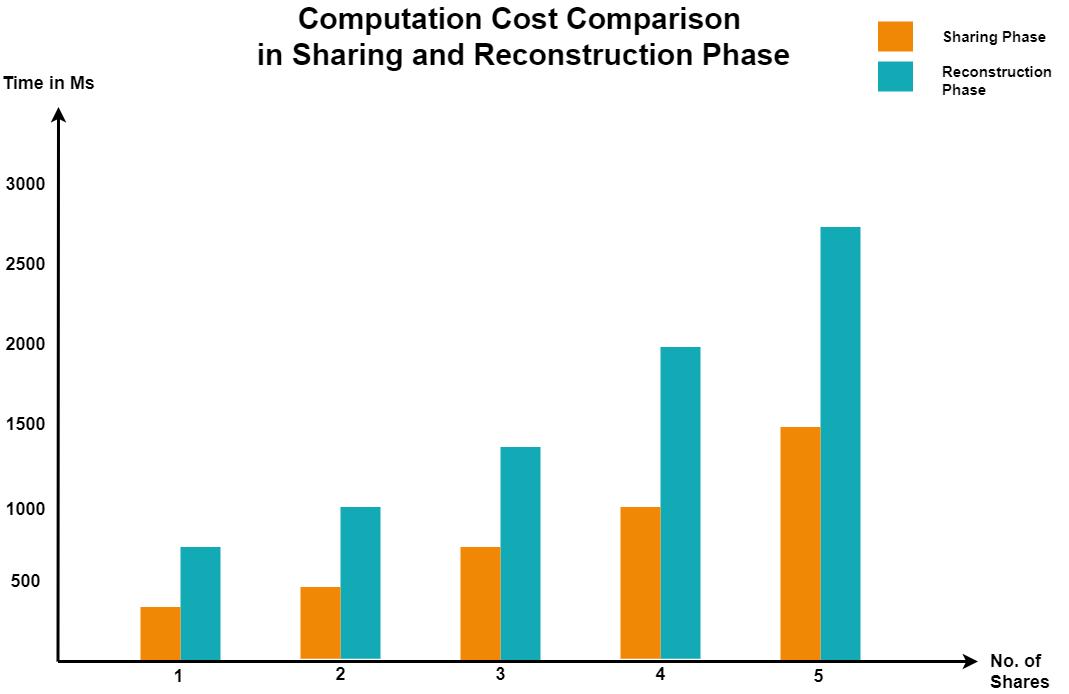
3 minute read
Encryption
e-ISSN: 2582-5208 International Research Journal of Modernization in Engineering Technology and Science
Volume:02/Issue:08/August -2020 Impact Factor- 5.354 www.irjmets.com
Advertisement
Shamir et. al. [2] proposed Polynomial-based Secret Image Sharing (PSIS). Lagrange interpolation was used to generate shares of the secret image and retrieve original with minimum number of shares. However, • It requires a huge computations cost in the regeneration phase. • Successful regeneration depends on number of shares and the sequence in which they appear and • The results are in a different data range from one of original image.
Yang et al. [3] has also suggested novel (k, n) probabilistic visual secret sharing (VSS) schemes with nonexpandable sizes of shares. They have presented various (k, n) schemes depending on the probability technique. The contrast level of this method is the same as the conventional VSS schemes. They have also demonstrated that the conventional VSS scheme can be changed to a probabilistic VSS scheme by using the transfer function. Alex et al. [4] used various methods for error diffusion to improve quality of the image in the halftone shares of the secretimage to be shared. They have used halftoning in which the continuous-tone image is transformed into a binary image by applying visual secret sharing (VSS) and then use visual cryptography (VC). The halftoning of images is used to add secret information pixels into not coded halftone shares. The secret image is converted into a halftone image by gaining visual information. It gets this significant visual information by applying error diffusion to halftone shares simultaneously. The regenerated image is obtained by gathering qualified shares together. Cross-interference of shared secret images does not hamper anything. Tso et al. [5] introduced a novel image sharing method to satisfy numerous problems such as, • Pixel Expansion problem. • Low quality of reconstructed image and creating useless shares for image sharing. This method firstly decomposes the secret image to be shared then encodes them into n number of shares. These image shares are then implanted into cover images. This approach is useful for constructing the meaningful shares of the images to be shared. The size of both the original secret image and the generated share is the same. On the receiver side when all the shares are combined to form a stack the quality of the reconstructed image is better and it has no distortion.
Teng Guo et al. [6] introduced (k,n) -TSISS -a (k,n) threshold based secret image sharing scheme. It breaks a secret image to be shared into n number of shares such as any k number of shares can be combined to regenerate the original secret image, but no less than k shared shadows can provide any information about the secret image. They have added an AES encryption process previous to the sharing process to generate a computationally secure (k, n) -TSISS. It combines the advantages of small share size with the guarantee of computational security.
Z. Wang et al. [7] have introduced Halftone Visual Cryptography (HVC) via error diffusion, which generates the shadows of pleasing visual information. They have used Error diffusionto construct the shadows such that the noise brought by the current pixels is diffused away while generating the halftone shadows. The secret image data is then naturally embedded into the halftone shadows. The isotropic and homogeneous distribution of the current pixels imposes the minimal noise in error diffusion, leading to shares with very good image quality. It follows the basic principle of visual cryptography, guaranteeing the security of the construction scheme. A large quality index leads to visually pleasing halftone shadows, but it also brings higher contrast loss in the regenerated images. This method gives visually pleasing halftone shadows.
III. PROBLEM DEFINITION
To design and develop a system which can address the limitations of previous methods such as Visual Secret Sharing (VSS), Polynomial Based Secret Image Sharing (PSIS), Visual Cryptography (VC) and provide a secure, efficient and lossless solution for sharing the secret images.
IV. PROPOSED METHODOLOGY A. Architecture:
Fig 1 shows overall architecture of proposed scheme There are three major functional components in this system. 1) Encryption 2) Sharing Encoding 3) Image Reconstruction.



